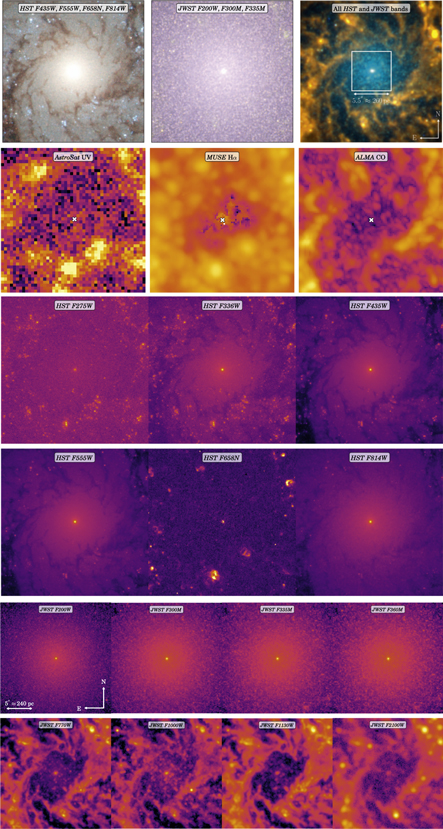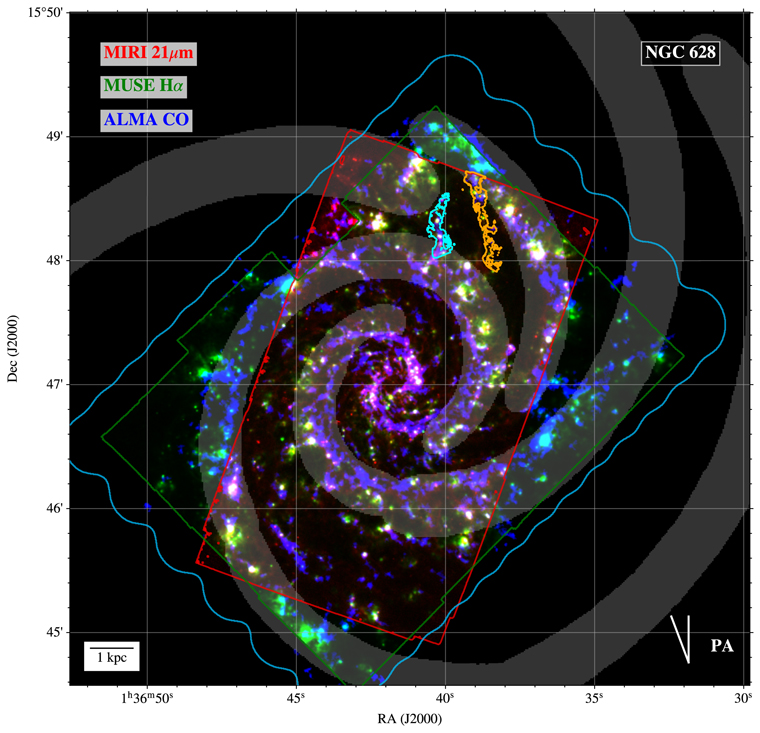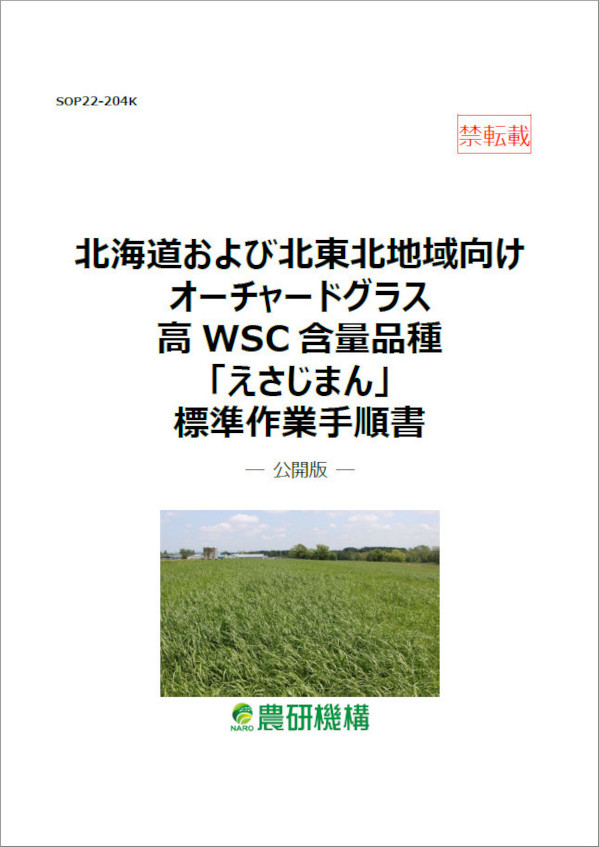- ジェームス・ウェッブ宇宙望遠鏡、他の銀河のガスと塵のネットワークで星形成を発見
James Webb Space Telescope unveils star formation in gas and dust networks of other galaxies
- PHANGS-JWSTの最初の成果:NGC 1365 の中心分子ガス環における星形成の急速な進展 PHANGS–JWST First Results: Rapid Evolution of Star Formation in the Central Molecular Gas Ring of NGC 1365
- PHANGS-JWSTの最初の成果:NGC 628 の核状星団の HST と JWST による複合的な解析 PHANGS–JWST First Results: A Combined HST and JWST Analysis of the Nuclear Star Cluster in NGC 628
- PHANGS-JWSTの最初の成果。星形成に拍車をかける。JWST が明らかにした NGC 628 の渦状腕の突出部における局所的な星形成 PHANGS-JWST First Results: Spurring on Star Formation: JWST Reveals Localized Star Formation in a Spiral Arm Spur of NGC 628
ジェームス・ウェッブ宇宙望遠鏡、他の銀河のガスと塵のネットワークで星形成を発見 James Webb Space Telescope unveils star formation in gas and dust networks of other galaxies
2023-02-24 マックス・プランク研究所
◆JWSTは、近くの19個の銀河のうち4つの銀河、NGC 628(M74)、NGC 1365、NGC 7496、IC 5332を赤外線波長で観測し、これまで隠れていた非常に細かい構造を可視化しています。これにより、これまで見逃されていた星の誕生に関する重要な情報が明らかになっています。
◆JWSTが提供する新しい視点は、星団や銀河の進化についての理解に基本的に貢献しており、若い星がまだ誕生雲の中にある場所を正確に特定できるようになり、流入するガスがどこで、どのように星に変換されるかを追跡することができます。
◆マックスプランク天文研究所の科学者を含む世界中の天文学者が、銀河における星形成の最後の謎を解き明かそうとしています。JWSTによる近傍銀河の高角度分解能物理学(Phangs-JWST)と呼ばれるこの研究は、米国アリゾナ州ツーソンの国立科学財団NOIRLabのジェミニ観測所の主任研究員ジャニス・リー氏が主導し、ジェームスウェブ宇宙望遠鏡の画像を解析しています。この研究チームの最新の成果は、アストロフィジカル・ジャーナル・レターズ誌の特別号に掲載されたばかりです。
<関連情報>
- https://www.mpg.de/19893081/0215-astr-james-webb-galaxies-150980-x?c=2249
- https://iopscience.iop.org/article/10.3847/2041-8213/acac9e
- https://iopscience.iop.org/article/10.3847/2041-8213/aca53e
- https://iopscience.iop.org/article/10.3847/2041-8213/aca674
PHANGS-JWSTの最初の成果:NGC 1365 の中心分子ガス環における星形成の急速な進展 PHANGS–JWST First Results: Rapid Evolution of Star Formation in the Central Molecular Gas Ring of NGC 1365
Eva Schinnerer, Eric Emsellem, Jonathan D. Henshaw, Daizhong Liu, Sharon E. Meidt, Miguel Querejeta, Florent Renaud, Mattia C. Sormani, Jiayi Sun, Oleg V. Egorov, Kirsten L. Larson, Adam K. Leroy, Erik Rosolowsky, Karin M. Sandstrom, T. G. Williams, Ashley. T. Barnes, F. Bigiel, Mélanie Chevance, Yixian Cao, Rupali Chandar, Daniel A. Dale, Cosima Eibensteiner, Simon C. O. Glover, Kathryn Grasha, Stephen Hannon, Hamid Hassani, Jaeyeon Kim, Ralf S. Klessen, J. M. Diederik Kruijssen, Eric J. Murphy, Justus Neumann, Hsi-An Pan, Jérôme Pety, Toshiki Saito, Sophia K. Stuber, Robin G. Treß, Antonio Usero, Elizabeth J. Watkins and Bradley C. Whitmore
The Astrophysical Journal Letters Published: 2023 February 16
DOI:10.3847/2041-8213/acac9e

Abstract
Large-scale bars can fuel galaxy centers with molecular gas, often leading to the development of dense ringlike structures where intense star formation occurs, forming a very different environment compared to galactic disks. We pair ∼0 3 (30 pc) resolution new JWST/MIRI imaging with archival ALMA CO(2–1) mapping of the central ∼5 kpc of the nearby barred spiral galaxy NGC 1365 to investigate the physical mechanisms responsible for this extreme star formation. The molecular gas morphology is resolved into two well-known bright bar lanes that surround a smooth dynamically cold gas disk (Rgal ∼ 475 pc) reminiscent of non-star-forming disks in early-type galaxies and likely fed by gas inflow triggered by stellar feedback in the lanes. The lanes host a large number of JWST-identified massive young star clusters. We find some evidence for temporal star formation evolution along the ring. The complex kinematics in the gas lanes reveal strong streaming motions and may be consistent with convergence of gas streamlines expected there. Indeed, the extreme line widths are found to be the result of inter-“cloud” motion between gas peaks; ScousePy decomposition reveals multiple components with line widths of 〈σCO,scouse〉 ≈ 19 km s−1 and surface densities of , similar to the properties observed throughout the rest of the central molecular gas structure. Tailored hydrodynamical simulations exhibit many of the observed properties and imply that the observed structures are transient and highly time-variable. From our study of NGC 1365, we conclude that it is predominantly the high gas inflow triggered by the bar that is setting the star formation in its CMZ.
3 (30 pc) resolution new JWST/MIRI imaging with archival ALMA CO(2–1) mapping of the central ∼5 kpc of the nearby barred spiral galaxy NGC 1365 to investigate the physical mechanisms responsible for this extreme star formation. The molecular gas morphology is resolved into two well-known bright bar lanes that surround a smooth dynamically cold gas disk (Rgal ∼ 475 pc) reminiscent of non-star-forming disks in early-type galaxies and likely fed by gas inflow triggered by stellar feedback in the lanes. The lanes host a large number of JWST-identified massive young star clusters. We find some evidence for temporal star formation evolution along the ring. The complex kinematics in the gas lanes reveal strong streaming motions and may be consistent with convergence of gas streamlines expected there. Indeed, the extreme line widths are found to be the result of inter-“cloud” motion between gas peaks; ScousePy decomposition reveals multiple components with line widths of 〈σCO,scouse〉 ≈ 19 km s−1 and surface densities of , similar to the properties observed throughout the rest of the central molecular gas structure. Tailored hydrodynamical simulations exhibit many of the observed properties and imply that the observed structures are transient and highly time-variable. From our study of NGC 1365, we conclude that it is predominantly the high gas inflow triggered by the bar that is setting the star formation in its CMZ.
PHANGS-JWSTの最初の成果:NGC 628 の核状星団の HST と JWST による複合的な解析 PHANGS–JWST First Results: A Combined HST and JWST Analysis of the Nuclear Star Cluster in NGC 628
Nils Hoyer, Francesca Pinna, Albrecht W. H. Kamlah, Francisco Nogueras-Lara, Anja Feldmeier-Krause, Nadine Neumayer, Mattia C. Sormani, Médéric Boquien, Eric Emsellem, Anil C. Seth, Ralf S. Klessen, Thomas G. Williams, Eva Schinnerer, Ashley. T. Barnes, Adam K. Leroy, Silvia Bonoli, J. M. Diederik Kruijssen, Justus Neumann, Patricia Sánchez-Blázquez, Daniel A. Dale, Elizabeth J. Watkins, David A. Thilker, Erik Rosolowsky, Frank Bigiel, Kathryn Grasha, Oleg V. Egorov, Daizhong Liu, Karin M. Sandstrom, Kirsten L. Larson, Guillermo A. Blanc and Hamid Hassani
The Astrophysical Journal Letters Published:2023 February 16
DOI:10.3847/2041-8213/aca53e

Abstract
We combine archival Hubble Space Telescope and new James Webb Space Telescope imaging data covering the ultraviolet to mid-infrared regime to morphologically analyze the nuclear star cluster (NSC) of NGC 628, a grand-design spiral galaxy. The cluster is located in a 200 pc × 400 pc cavity lacking both dust and gas. We find roughly constant values for the effective radius (reff ∼ 5 pc) and ellipticity ( ∼ 0.05), while the Sérsic index (n) and position angle (PA) drop from n ∼ 3 to ∼2 and PA ∼ 130° to 90°, respectively. In the mid-infrared, reff ∼ 12 pc, ε ∼ 0.4, and n ∼ 1–1.5, with the same PA ∼ 90°. The NSC has a stellar mass of , as derived through B − V, confirmed when using multiwavelength data, and in agreement with the literature value. Fitting the spectral energy distribution (SED), excluding the mid-infrared data, yields a main stellar population age of (8 ± 3) Gyr with a metallicity of Z = 0.012 ± 0.006. There is no indication of any significant star formation over the last few gigayears. Whether gas and dust were dynamically kept out or evacuated from the central cavity remains unclear. The best fit suggests an excess of flux in the mid-infrared bands, with further indications that the center of the mid-infrared structure is displaced with respect to the optical center of the NSC. We discuss five potential scenarios, none of them fully explaining both the observed photometry and structure.
∼ 0.05), while the Sérsic index (n) and position angle (PA) drop from n ∼ 3 to ∼2 and PA ∼ 130° to 90°, respectively. In the mid-infrared, reff ∼ 12 pc, ε ∼ 0.4, and n ∼ 1–1.5, with the same PA ∼ 90°. The NSC has a stellar mass of , as derived through B − V, confirmed when using multiwavelength data, and in agreement with the literature value. Fitting the spectral energy distribution (SED), excluding the mid-infrared data, yields a main stellar population age of (8 ± 3) Gyr with a metallicity of Z = 0.012 ± 0.006. There is no indication of any significant star formation over the last few gigayears. Whether gas and dust were dynamically kept out or evacuated from the central cavity remains unclear. The best fit suggests an excess of flux in the mid-infrared bands, with further indications that the center of the mid-infrared structure is displaced with respect to the optical center of the NSC. We discuss five potential scenarios, none of them fully explaining both the observed photometry and structure.
PHANGS-JWSTの最初の成果。星形成に拍車をかける。JWST が明らかにした NGC 628 の渦状腕の突出部における局所的な星形成 PHANGS-JWST First Results: Spurring on Star Formation: JWST Reveals Localized Star Formation in a Spiral Arm Spur of NGC 628
Thomas G. Williams, Jiayi Sun, Ashley T. Barnes, Eva Schinnerer, Jonathan D. Henshaw, Sharon E. Meidt, Miguel Querejeta, Elizabeth J. Watkins, Frank Bigiel, Guillermo A. Blanc, Médéric Boquien, Yixian Cao, Mélanie Chevance, Oleg V. Egorov, Eric Emsellem, Simon C. O. Glover, Kathryn Grasha, Hamid Hassani, Sarah Jeffreson, María J. Jiménez-Donaire, Jaeyeon Kim, Ralf S. Klessen, Kathryn Kreckel, J. M. Diederik Kruijssen, Kirsten L. Larson, Adam K. Leroy, Daizhong Liu, Ismael Pessa, Jérôme Pety, Francesca Pinna, Erik Rosolowsky, Karin M. Sandstrom, Rowan Smith, Mattia C. Sormani, Sophia Stuber, David A. Thilker and Bradley C. Whitmore
The Astrophysical Journal Letters Published:2022 December 16
DOI:10.3847/2041-8213/aca674

Abstract
We combine JWST observations with Atacama Large Millimeter/submillimeter Array CO and Very Large Telescope MUSE Hα data to examine off-spiral arm star formation in the face-on, grand-design spiral galaxy NGC 628. We focus on the northern spiral arm, around a galactocentric radius of 3–4 kpc, and study two spurs. These form an interesting contrast, as one is CO-rich and one CO-poor, and they have a maximum azimuthal offset in MIRI 21 μm and MUSE Hα of around 40° (CO-rich) and 55° (CO-poor) from the spiral arm. The star formation rate is higher in the regions of the spurs near spiral arms, but the star formation efficiency appears relatively constant. Given the spiral pattern speed and rotation curve of this galaxy and assuming material exiting the arms undergoes purely circular motion, these offsets would be reached in 100–150 Myr, significantly longer than the 21 μm and Hα star formation timescales (both < 10 Myr). The invariance of the star formation efficiency in the spurs versus the spiral arms indicates massive star formation is not only triggered in spiral arms, and cannot simply occur in the arms and then drift away from the wave pattern. These early JWST results show that in situ star formation likely occurs in the spurs, and that the observed young stars are not simply the “leftovers” of stellar birth in the spiral arms. The excellent physical resolution and sensitivity that JWST can attain in nearby galaxies will well resolve individual star-forming regions and help us to better understand the earliest phases of star formation.



